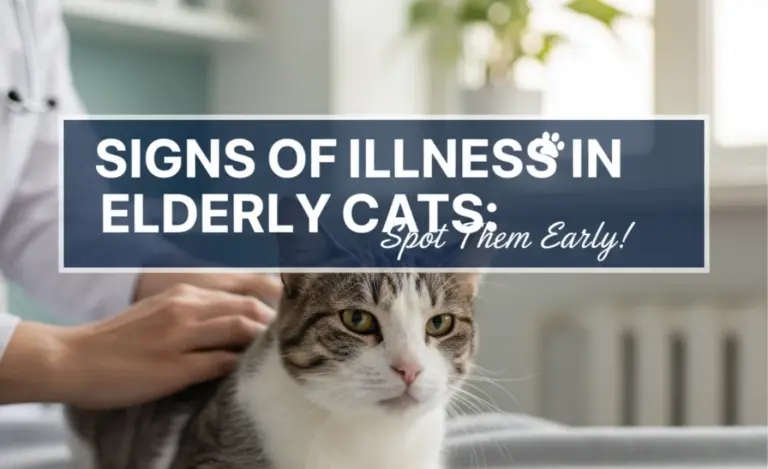How to Tell if a Senior Cat is in Pain: Easy Guide
It can be tricky to tell if your senior cat is in pain, as cats are masters at hiding discomfort. Look for subtle changes in behavior like decreased grooming, hiding more often, changes in appetite, reluctance to jump, or altered litter box habits. Watch for physical signs such as limping, stiffness, or sensitivity to touch. If you notice any of these signs, consult your veterinarian.
As our beloved British Shorthairs enter their golden years, it’s natural to want to ensure their comfort and well-being. But our feline friends are notoriously stoic, often masking pain until it becomes severe. This can make it challenging to know if your senior cat is suffering. Are they just slowing down with age, or is there something more going on?
Understanding the subtle signs of pain in senior cats is crucial for providing them with the care they deserve. I’ll guide you through the common indicators of pain, from behavioral changes to physical symptoms. Together, we can help your senior British Shorthair live a happier, more comfortable life. Let’s get started!
Understanding Pain in Senior Cats
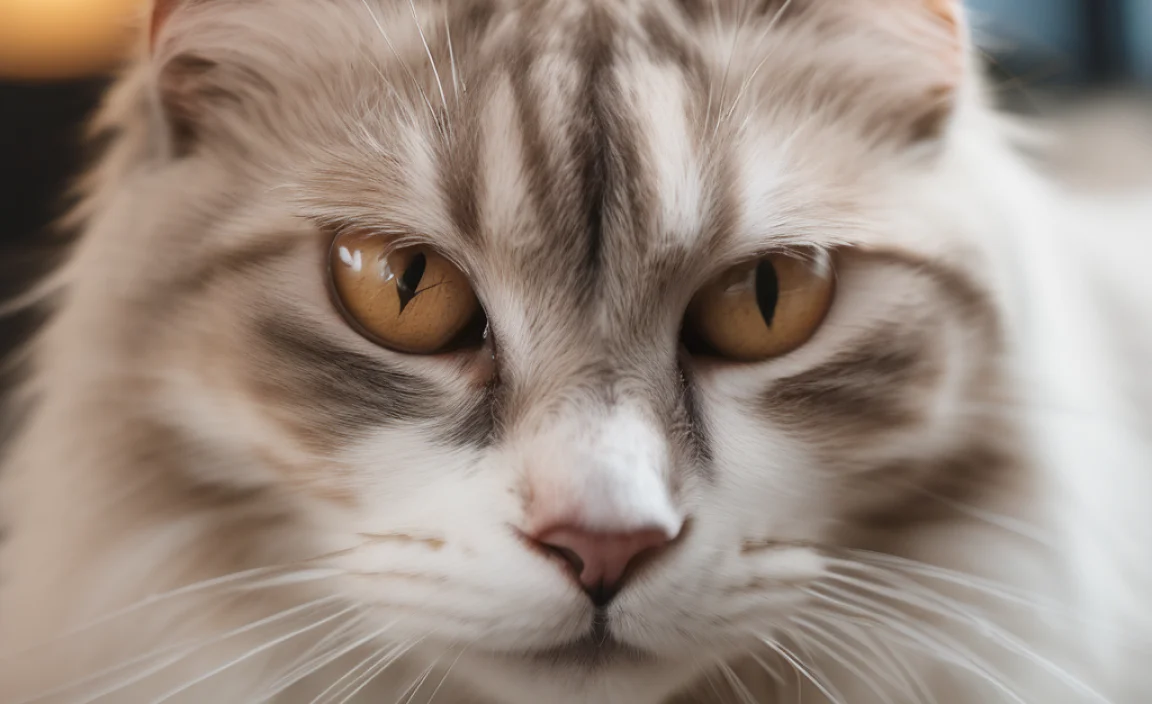
Senior cats, generally those over the age of 11, are more prone to developing painful conditions such as arthritis, dental disease, and even cancer. According to the Cornell Feline Health Center, arthritis affects a significant percentage of older cats, often going undiagnosed because cats are so good at hiding their discomfort. Recognizing that pain is a common issue in senior cats is the first step in helping them.
Why Cats Hide Pain
Cats instinctively hide pain as a survival mechanism. In the wild, showing weakness makes them vulnerable to predators. Even though our domesticated cats live in safe homes, this instinct remains strong. This means you have to be a keen observer to detect subtle signs that your cat is in pain.
Common Causes of Pain in Senior Cats
Several conditions can cause pain in senior cats. Here are some of the most common:
- Arthritis: A degenerative joint disease that causes inflammation and pain.
- Dental Disease: Painful inflammation and infection of the gums and teeth.
- Kidney Disease: Can cause discomfort and pain, although often indirectly.
- Cancer: Depending on the type and location, cancer can cause significant pain.
- Hyperthyroidism: While not directly painful, it can cause other health problems that lead to discomfort.
Behavioral Signs of Pain in Senior Cats
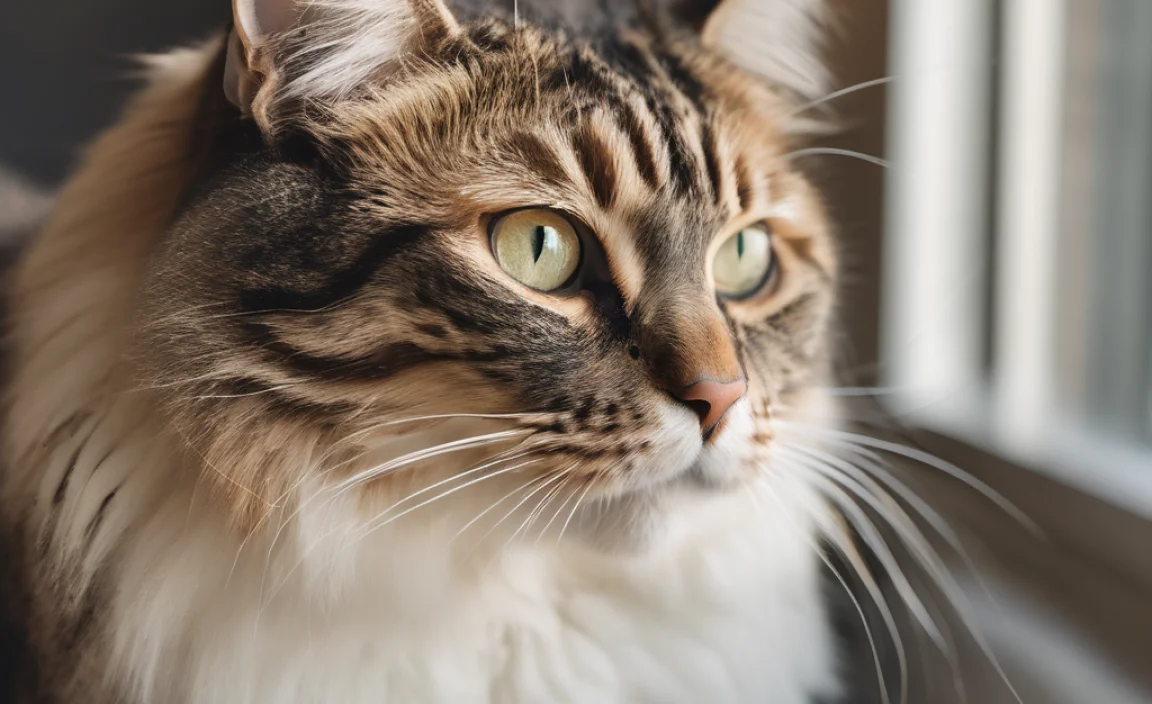
One of the first indicators that your senior cat is in pain is a change in their behavior. These changes can be subtle, so it’s important to pay close attention to your cat’s daily habits.
Changes in Grooming Habits
Cats are meticulous groomers, so a change in their grooming habits can be a red flag. A cat in pain may groom less or stop grooming altogether. This can result in a matted or unkempt coat. Conversely, some cats may over-groom a particular area in an attempt to soothe the pain.
Decreased Activity and Mobility
A painful cat may become less active and less mobile. You might notice that they are reluctant to jump, climb stairs, or play. They may also sleep more than usual or spend more time in one place. According to the RSPCA, a noticeable decrease in activity is a common sign of arthritis in older cats.
Changes in Social Interaction
If your cat is usually affectionate but suddenly becomes withdrawn or irritable, it could be a sign of pain. They may avoid being petted or picked up, and they may even hiss or swat if you touch them in a sensitive area. Some cats may become more clingy and demand more attention than usual.
Altered Appetite and Water Intake
Pain can affect a cat’s appetite and water intake. Some cats may eat less or lose interest in food altogether. Others may have difficulty eating dry food if they have dental pain and prefer soft food. Changes in water intake can also indicate underlying health problems, such as kidney disease, which can cause discomfort.
Changes in Litter Box Habits
Pain can make it difficult for a cat to get in and out of the litter box. They may start eliminating outside the box if it’s too painful to climb in. This is especially common in cats with arthritis. Additionally, straining to urinate or defecate can also indicate a painful condition, such as a urinary tract infection or constipation.
Increased Vocalization
Some cats become more vocal when they are in pain. They may meow, purr, or even yowl more than usual. This vocalization can be a way for them to communicate their discomfort to you. However, it’s important to note that not all cats vocalize when they are in pain, so the absence of increased vocalization doesn’t necessarily mean your cat is pain-free.
Hiding
A cat in pain may seek out secluded places to hide. This is another survival instinct, as hiding allows them to feel safer and more protected when they are feeling vulnerable. If your cat suddenly starts spending more time under the bed or in a closet, it could be a sign that they are in pain.
Physical Signs of Pain in Senior Cats
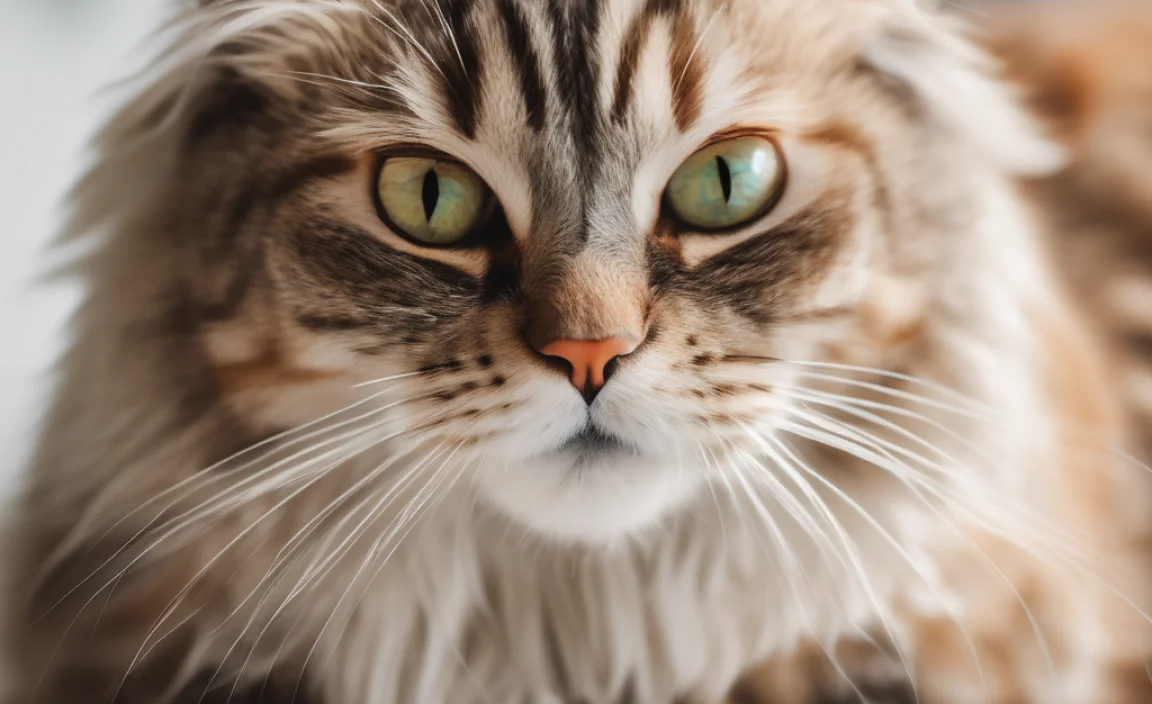
In addition to behavioral changes, there are several physical signs that can indicate pain in senior cats. These signs may be more obvious than behavioral changes, but they can still be subtle and easy to miss if you’re not paying close attention.
Limping or Stiffness
Limping is an obvious sign of pain, but it’s not always present in cats with arthritis or other musculoskeletal problems. Stiffness is a more subtle sign that can be easy to overlook. You may notice that your cat moves more slowly or has difficulty getting up after lying down. Stiffness is often more noticeable after a period of rest.
Sensitivity to Touch
A cat in pain may be sensitive to touch, especially in the affected area. They may flinch, hiss, or try to move away if you touch them in a particular spot. This sensitivity can be a sign of inflammation or injury.
Changes in Posture
A cat in pain may adopt an abnormal posture to try to relieve the discomfort. For example, a cat with abdominal pain may hunch over or tuck their abdomen in. A cat with back pain may have a hunched back or hold their head and neck in an unusual position.
Panting or Rapid Breathing
While panting is more common in dogs, cats may pant if they are in severe pain or distress. Rapid breathing can also be a sign of pain, especially if it’s accompanied by other symptoms such as restlessness or vocalization. However, it’s important to note that panting and rapid breathing can also be signs of other health problems, such as heart or lung disease.
Pupil Dilation
Pain can cause the pupils to dilate, making them appear larger than normal. This is due to the release of adrenaline in response to the pain. However, pupil dilation can also be a sign of other conditions, such as anxiety or certain medications.
Loss of Appetite and Weight Loss
As mentioned earlier, pain can affect a cat’s appetite. If your cat is eating less or losing weight, it could be a sign that they are in pain. Weight loss can also be a sign of other health problems, such as kidney disease or cancer, so it’s important to consult your veterinarian if you notice your cat is losing weight.
Coat Changes
A cat in pain may neglect their grooming, leading to a dull, matted coat. They may also develop bald spots or skin lesions if they are excessively licking or scratching a particular area in an attempt to relieve the pain.
How to Assess Your Cat for Pain
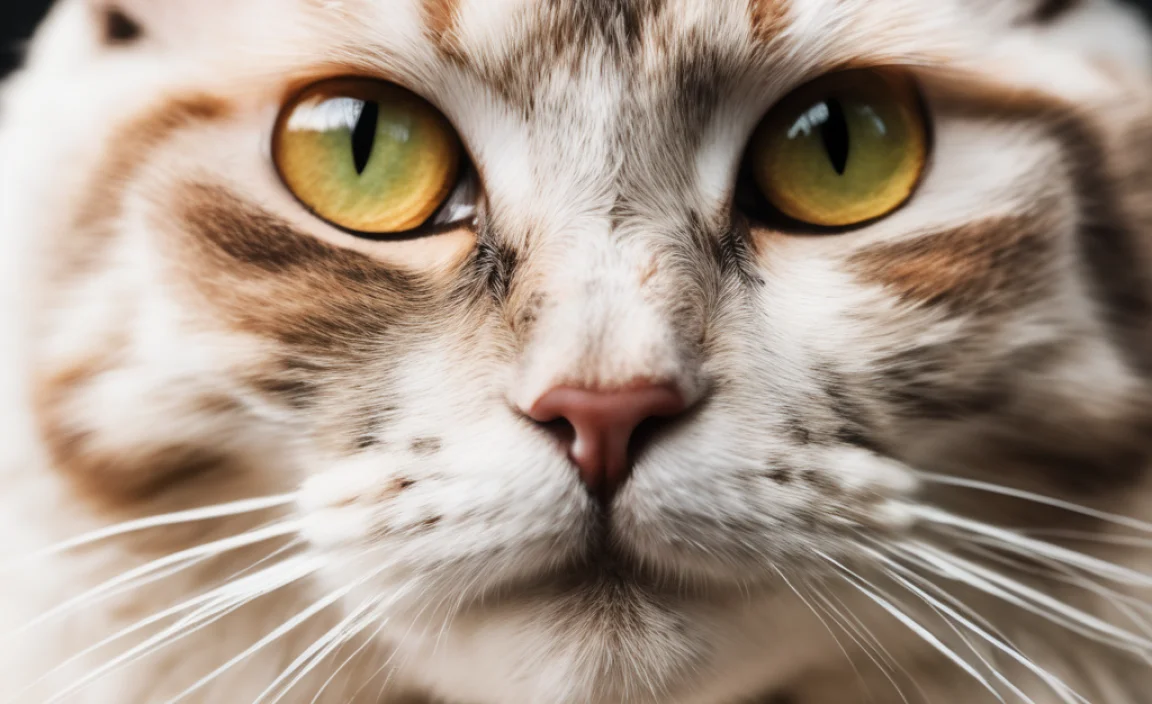
Now that you know the signs of pain in senior cats, here’s how to assess your cat for pain at home. Remember, this is not a substitute for a veterinary exam, but it can help you identify potential problems and communicate them to your veterinarian.
- Observe Your Cat’s Behavior: Pay attention to your cat’s daily habits and look for any changes in their grooming, activity level, social interaction, appetite, and litter box habits.
- Perform a Physical Exam: Gently examine your cat’s body, looking for any signs of sensitivity, swelling, or abnormalities. Start by petting them gently and gradually increase the pressure. Pay attention to their reaction and stop if they show any signs of discomfort.
- Check Their Mobility: Watch your cat walk, jump, and climb stairs. Look for any signs of limping, stiffness, or difficulty moving.
- Assess Their Posture: Observe your cat’s posture while they are standing, sitting, and lying down. Look for any signs of hunching, stiffness, or abnormal positioning.
- Monitor Their Appetite and Water Intake: Keep track of how much your cat is eating and drinking. Note any changes in their appetite or water intake.
- Check Their Litter Box: Monitor your cat’s litter box habits. Look for any signs of straining, changes in urine or stool volume, or elimination outside the box.
Tools to Help Monitor Your Cat’s Pain
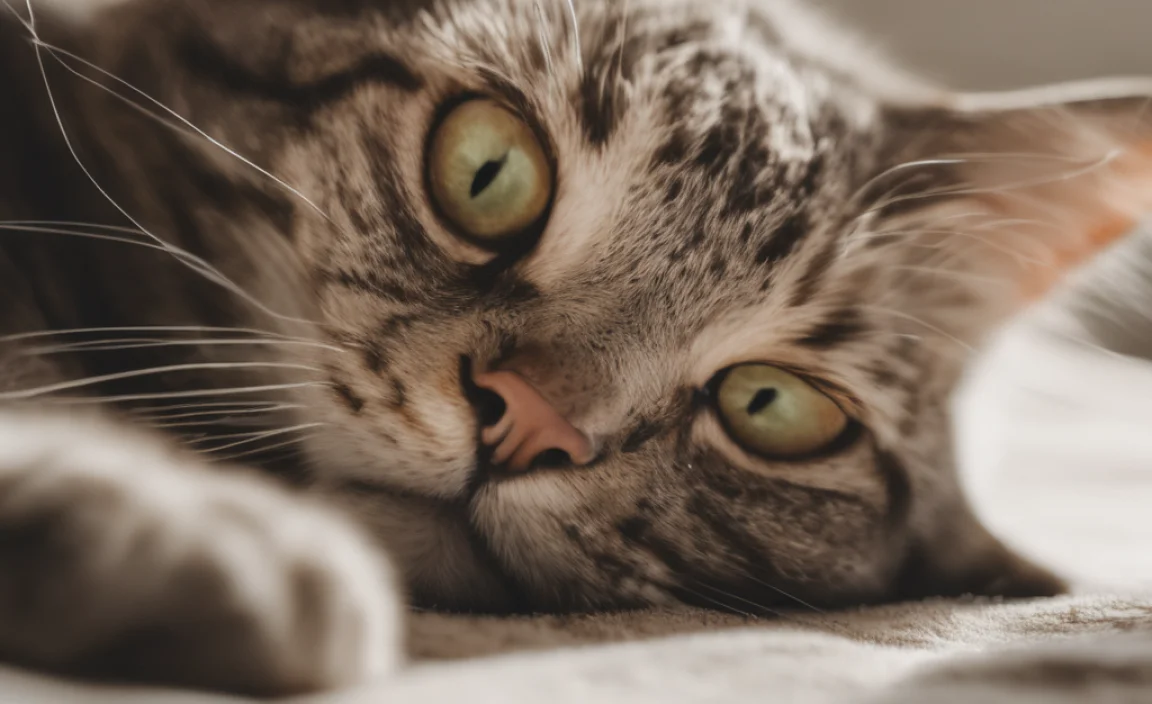
Several tools can help you monitor your cat’s pain and track their progress. These tools can be especially helpful if your cat has a chronic pain condition, such as arthritis.
- Pain Scales: Pain scales are questionnaires that help you assess your cat’s pain level based on their behavior and physical signs. Several pain scales are available online, such as the Glasgow Feline Composite Measure Pain Scale.
- Activity Monitors: Activity monitors, such as Fitbits or activity trackers designed for pets, can help you track your cat’s activity level and identify any changes that may indicate pain.
- Pain Journals: Keeping a pain journal can help you track your cat’s pain levels, medications, and other treatments. This can be a valuable tool for communicating with your veterinarian and monitoring your cat’s progress.
When to See a Veterinarian
If you suspect your senior cat is in pain, it’s important to consult your veterinarian as soon as possible. Pain can be a sign of a serious underlying health problem, and early diagnosis and treatment can improve your cat’s quality of life. Don’t wait for the pain to become severe before seeking veterinary care.
What to Expect at the Vet
When you take your cat to the veterinarian for pain, they will perform a thorough physical exam and ask you about your cat’s history and symptoms. They may also recommend diagnostic tests, such as blood work, X-rays, or ultrasound, to help determine the cause of the pain. Once the cause of the pain is identified, your veterinarian will develop a treatment plan tailored to your cat’s specific needs.
Pain Management Options
Several pain management options are available for senior cats. Your veterinarian may recommend one or more of the following:
- Medications: Pain medications, such as nonsteroidal anti-inflammatory drugs (NSAIDs) or opioids, can help relieve pain and inflammation. However, it’s important to use these medications with caution, as they can have side effects.
- Supplements: Supplements, such as glucosamine and chondroitin, can help support joint health and reduce pain in cats with arthritis.
- Physical Therapy: Physical therapy, such as massage, stretching, and hydrotherapy, can help improve mobility and reduce pain.
- Acupuncture: Acupuncture is a traditional Chinese medicine technique that involves inserting thin needles into specific points on the body to relieve pain and promote healing.
- Lifestyle Modifications: Making changes to your cat’s environment, such as providing soft bedding, raised food and water bowls, and ramps or stairs to help them access their favorite spots, can also help reduce pain.
Creating a Comfortable Environment for a Senior Cat in Pain
Creating a comfortable environment is essential for managing pain in senior cats. Small changes can make a big difference in their quality of life.
Soft Bedding
Provide soft, comfortable bedding in a warm, quiet place. Orthopedic beds designed for senior pets can be especially helpful for cats with arthritis.
Easy Access to Resources
Make sure your cat has easy access to food, water, and the litter box. If they have difficulty climbing stairs, place resources on each level of your home.
Raised Food and Water Bowls
Raised food and water bowls can help reduce strain on your cat’s neck and joints, especially if they have arthritis.
Ramps and Stairs
Provide ramps or stairs to help your cat access their favorite spots, such as the couch or bed. This can make it easier for them to move around and reduce the risk of injury.
Regular Grooming
If your cat is having difficulty grooming themselves, help them out by brushing them regularly. This can help prevent matting and keep their coat clean and healthy.
Keep Them Warm
Senior cats often have difficulty regulating their body temperature, so it’s important to keep them warm. Provide a warm bed and avoid exposing them to drafts.
The Importance of Regular Veterinary Checkups
Regular veterinary checkups are crucial for senior cats. Your veterinarian can detect early signs of pain and other health problems, allowing for prompt treatment. The International Cat Association (TICA) recommends that senior cats have a veterinary checkup at least twice a year.
Discussing Your Concerns with Your Vet
Don’t hesitate to discuss your concerns with your veterinarian. They are your partner in your cat’s care and can provide valuable advice and support. Be sure to tell them about any changes you’ve noticed in your cat’s behavior or physical condition.
| Sign of Pain | Description | Possible Cause |
|---|---|---|
| Decreased Grooming | Cat stops grooming or grooms less frequently. | Arthritis, dental pain, general malaise. |
| Decreased Activity | Cat is less active, reluctant to jump or climb. | Arthritis, muscle pain, general weakness. |
| Hiding | Cat hides more often than usual. | Any painful condition, anxiety. |
| Altered Appetite | Cat eats less or has difficulty eating. | Dental pain, nausea, decreased sense of smell. |
| Litter Box Issues | Cat eliminates outside the litter box. | Arthritis, urinary tract infection, kidney disease. |
Frequently Asked Questions (FAQ)
How can I tell if my cat is just getting old or if they’re in pain?
It can be tough to tell! Gradual slowing down is normal with age, but sudden changes in behavior (like hiding, decreased grooming, or appetite changes) are more likely signs of pain.
What are some common signs of arthritis in older cats?
Watch for stiffness, especially after resting, reluctance to jump, decreased activity, and changes in grooming habits. They may also be sensitive to touch in certain areas.
My cat is purring more than usual. Does that mean they’re happy?
Not necessarily. While purring often indicates contentment, cats also purr when they’re in pain or stressed as a self-soothing mechanism. Consider the context and other signs.
Can I give my cat human pain medication?
Absolutely not! Many human pain medications, like ibuprofen or acetaminophen, are toxic to cats and can be fatal. Always consult your veterinarian for appropriate pain relief options.
My cat is eliminating outside the litter box. Could this be due to pain?
Yes, pain (especially from arthritis) can make it difficult for cats to get in and out of the litter box, leading to accidents. However, other medical and behavioral issues can also cause this, so a vet visit is essential.
What can I do to make my senior cat more comfortable at home?
Provide soft bedding, easy access to food, water, and litter box, and consider raised bowls and ramps to help them move around more easily. Keep them warm and groom them regularly if they’re having trouble grooming themselves.
How often should I take my senior cat to the vet?
Senior cats (over 11 years old) should have a veterinary checkup at least twice a year. This allows your vet to catch any potential health problems early and provide appropriate treatment.
Conclusion
Recognizing pain in senior cats can be challenging, but with careful observation and a proactive approach, you can help your feline friend live a more comfortable and fulfilling life. Remember to pay close attention to changes in their behavior and physical condition, and don’t hesitate to consult your veterinarian if you have any concerns. By working together, you and your veterinarian can develop a pain management plan that meets your cat’s specific needs and improves their quality of life. As a devoted British Shorthair owner, ensuring your senior cat’s comfort is a testament to the special bond you share. Trust your instincts, and always prioritize their well-being.

